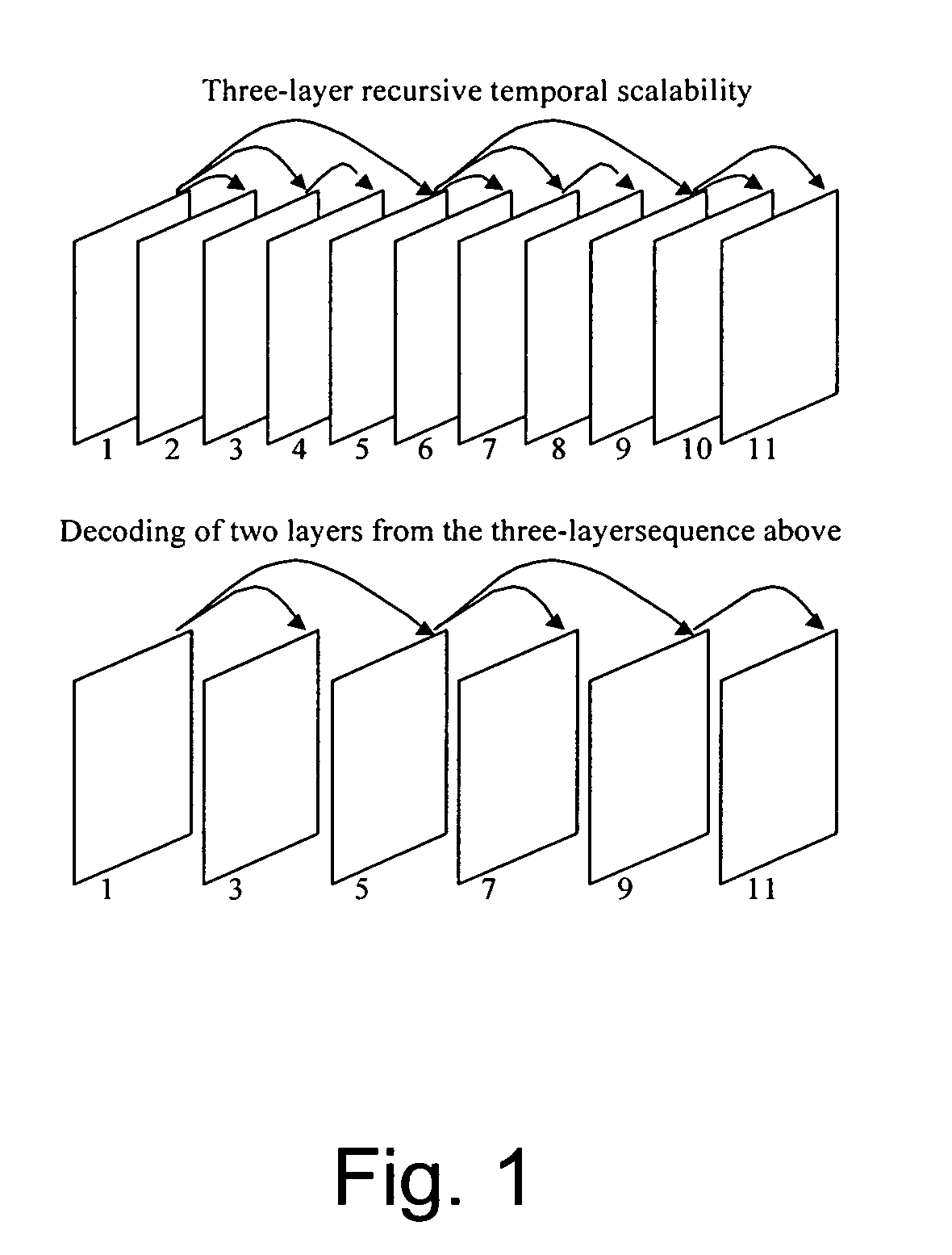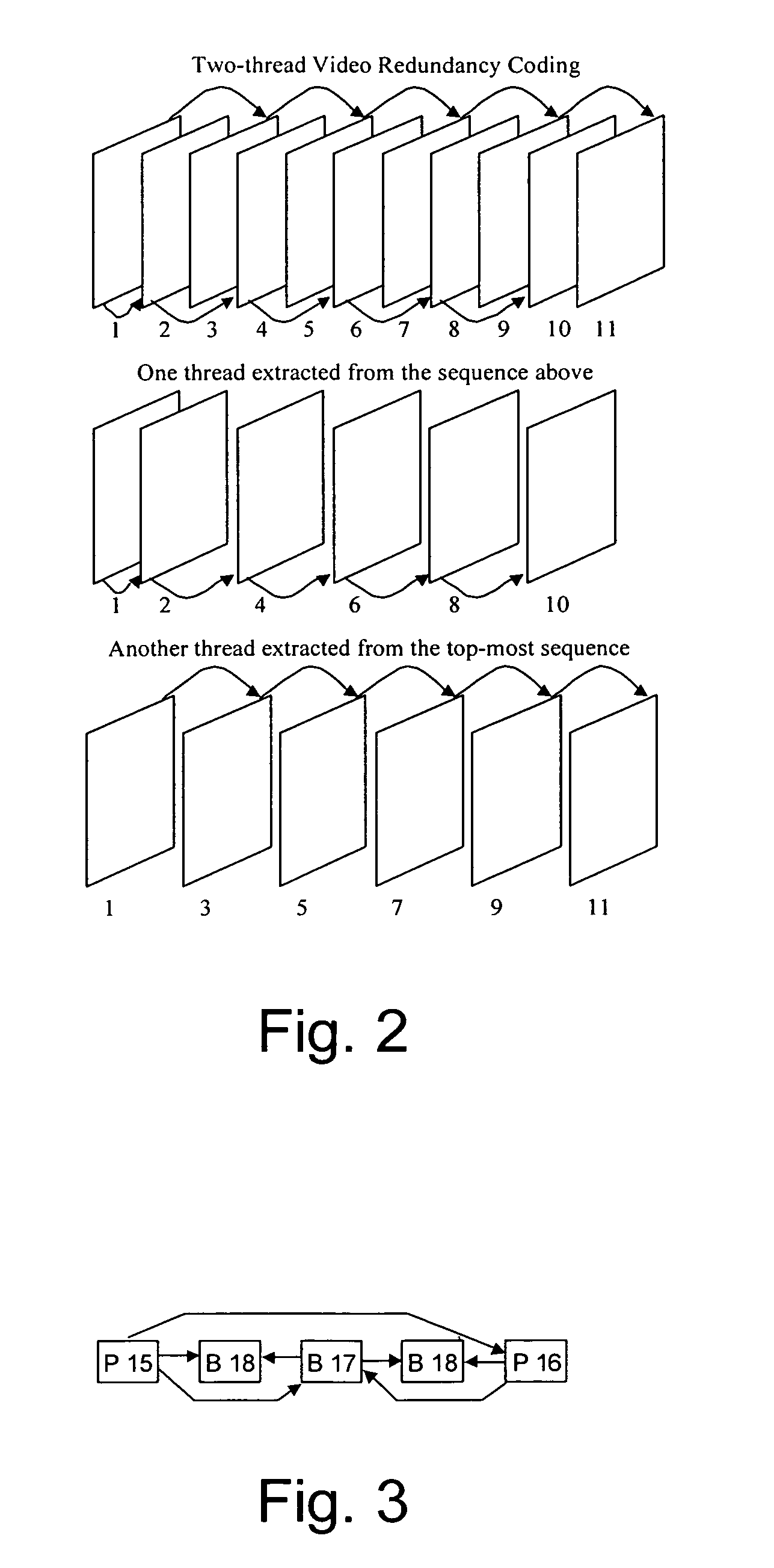Picture decoding method
a picture and decoding technology, applied in the field of picture decoding methods, can solve the problems of increasing system complexity, reducing compression efficiency, increasing encoding and transmission overhead, etc., and achieve the effect of improving error resiliency and improving compression efficiency
- Summary
- Abstract
- Description
- Claims
- Application Information
AI Technical Summary
Benefits of technology
Problems solved by technology
Method used
Image
Examples
Embodiment Construction
[0110]The general concept behind de-packetization rules is to reorder transmission units such as NAL units from transmission order to the NAL unit decoding order.
[0111]The receiver includes a receiver buffer (or a predecoder buffer), which is used to reorder packets from transmission order to the NAL unit decoding order. In an example embodiment of the present invention the receiver buffer size is set, in terms of number of bytes, equal to or greater than the value of a deint-buf-size parameter, for example to a value 1.2*the value of deint-buf-size MIME parameter. The receiver may also take buffering for transmission delay jitter into account and either reserve a separate buffer for transmission delay jitter buffering or combine the buffer for transmission delay jitter with the receiver buffer (and hence reserve some additional space for delay jitter buffering in the receiver buffer).
[0112]The receiver stores incoming NAL units in reception order into the receiver buffer as follows...
PUM
 Login to View More
Login to View More Abstract
Description
Claims
Application Information
 Login to View More
Login to View More - R&D
- Intellectual Property
- Life Sciences
- Materials
- Tech Scout
- Unparalleled Data Quality
- Higher Quality Content
- 60% Fewer Hallucinations
Browse by: Latest US Patents, China's latest patents, Technical Efficacy Thesaurus, Application Domain, Technology Topic, Popular Technical Reports.
© 2025 PatSnap. All rights reserved.Legal|Privacy policy|Modern Slavery Act Transparency Statement|Sitemap|About US| Contact US: help@patsnap.com



